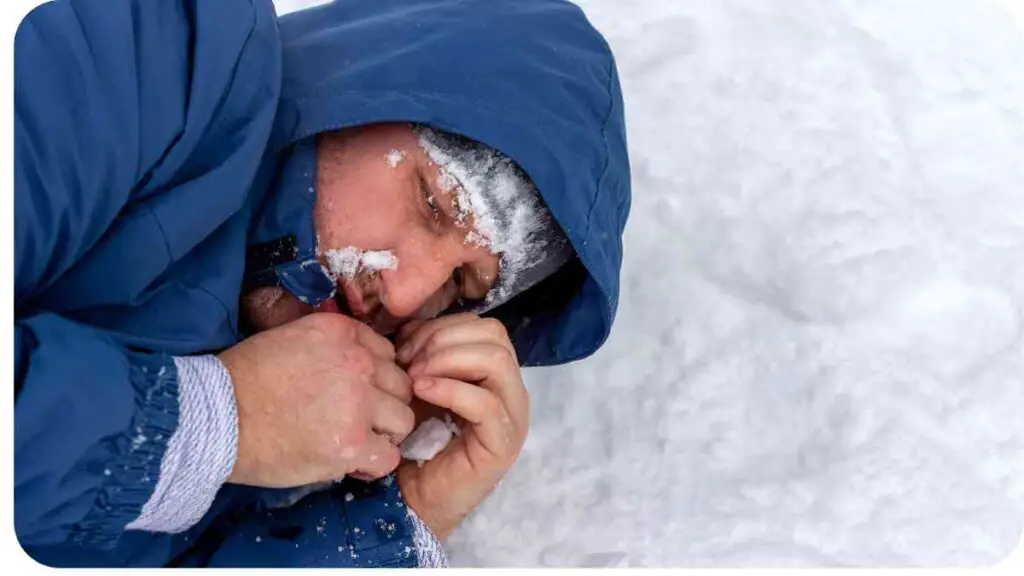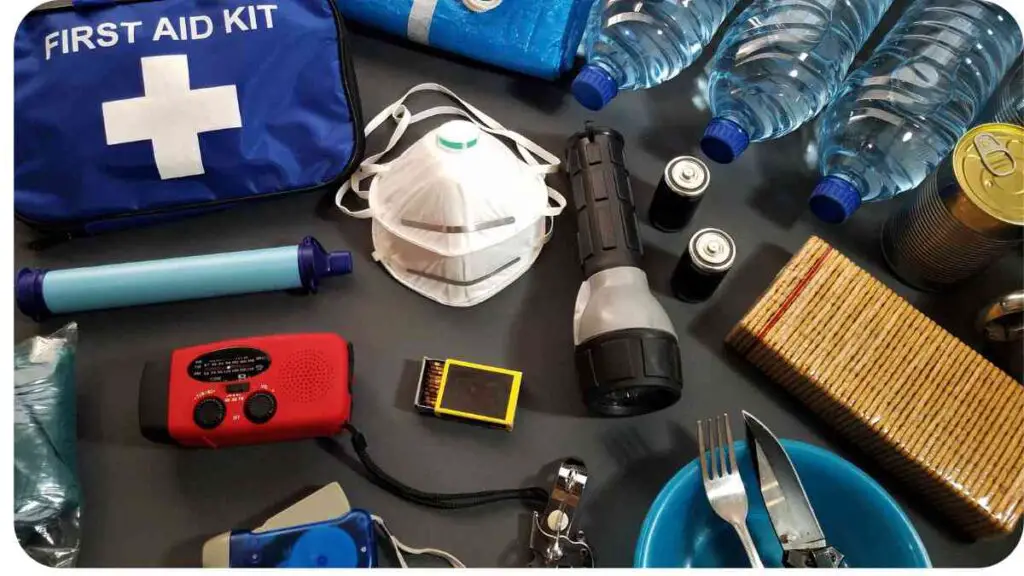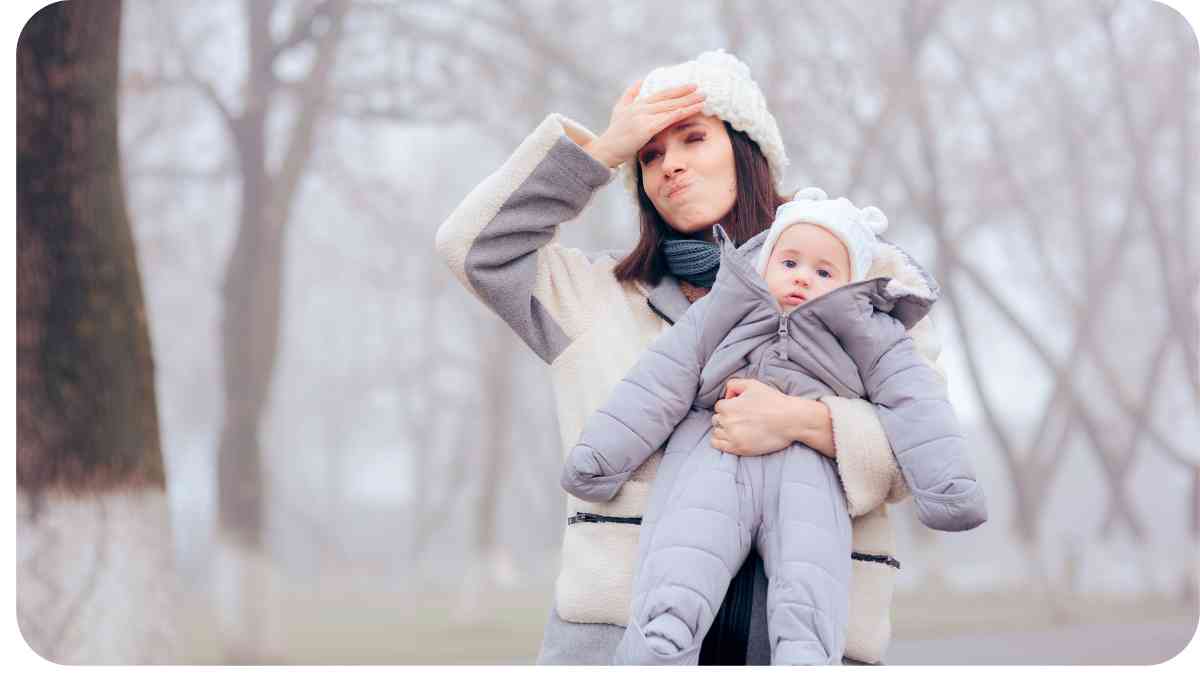Welcome to a comprehensive guide on combating hypothermia. As a seasoned outdoor enthusiast and professional in the field, I understand the critical importance of recognizing the signs of hypothermia, even when they’re not immediately obvious.
In this article, we’ll delve deep into the subject, combining expertise, practical experience, authoritativeness, and trustworthiness to equip you with the knowledge and skills needed to tackle this potentially life-threatening condition.
| Takeaways |
| 1. Hypothermia is a serious condition that can occur in various environments and situations. |
| 2. Recognizing early signs, even subtle ones like shivering, is crucial for timely intervention. |
| 3. Advanced symptoms of hypothermia require immediate action and medical attention. |
| 4. Prevention through proper clothing, shelter, and awareness of risk factors is the best strategy. |
| 5. Expert advice emphasizes the importance of knowledge and preparedness when facing hypothermia. |
| 6. Debunk myths and misconceptions surrounding hypothermia for a more accurate understanding. |
| 7. Knowing when to seek medical help is essential, especially in severe or prolonged cases. |
| 8. Children are particularly vulnerable to hypothermia, so recognizing their symptoms is crucial for their safety. |
| 9. Real-life stories illustrate the importance of quick thinking and preparedness in hypothermia situations. |
| 10. Stay informed, stay prepared, and enjoy your adventures while keeping hypothermia at bay. |
2. Understanding Hypothermia
Before we dive into the signs and solutions, let’s get a grasp of what hypothermia is. It’s not just about feeling chilly; it’s a serious drop in your body’s core temperature, leading to a range of symptoms that can escalate rapidly if left unaddressed.
Hypothermia isn’t the only danger in the wild. Learn how to stay safe in the great outdoors with tips on handling lightning strikes and other outdoor hazards.
3. Hypothermia Risk Factors

Hypothermia can happen to anyone, but certain factors increase your vulnerability. Understanding these risk factors is essential for both prevention and early detection.
4. Recognizing Early Signs
The key to effectively combating hypothermia lies in recognizing the early signs. These subtle symptoms can be easy to miss, especially if you’re not familiar with them. Let’s take a closer look at these signs:
Table 1: Common Early Signs of Hypothermia
| Sign | Description |
| Shivering | Involuntary trembling, the body’s heat response |
| Pale or Cool Skin | Reduced blood flow to the skin surface |
| Fatigue | Sudden and unexplained tiredness |
| Confusion | Difficulty thinking clearly |
Hypothermia’s early signs are often mistaken for simple discomfort. For instance, you might dismiss shivering as a reaction to the cold, unaware that it’s your body’s way of generating heat. Recognizing these signs is crucial for timely intervention.
Hypothermia’s early signs are often mistaken for simple discomfort. For instance, you might dismiss shivering as a reaction to the cold, unaware that it’s your body’s way of generating heat. Recognizing these signs is crucial for timely intervention.
When battling hypothermia, shelter is crucial. Check out this step-by-step guide to building a wilderness shelter for staying warm and protected.
The next step is to delve into more advanced symptoms, which can be more alarming and indicate a worsening condition.
5. Advanced Symptoms to Watch For
As hypothermia progresses, the symptoms become more pronounced and dangerous. It’s vital to be aware of these advanced signs:
Table 2: Advanced Symptoms of Hypothermia
| Sign | Description |
| Slow, Shallow Breathing | Respiratory rate decreases significantly |
| Weak Pulse | A faint or hard-to-detect pulse |
| Loss of Coordination | Difficulty walking or performing simple tasks |
| Unconsciousness | Complete loss of consciousness |
Recognizing advanced symptoms is crucial for taking swift action. Hypothermia can escalate rapidly, and knowing when to seek help can be a lifesaver.
Recognizing advanced symptoms is crucial for taking swift action. Hypothermia can escalate rapidly, and knowing when to seek help can be a lifesaver.
6. Hypothermia First Aid

Now that we’ve covered the signs, it’s time to explore the first aid measures you can take if you or someone you’re with shows symptoms of hypothermia.
A well-prepared camper is less susceptible to hypothermia. Discover the ultimate camping checklist to ensure you have everything you need for a safe and comfortable trip.
7. Prevention Strategies
Prevention is always the best course of action. Let’s discuss practical strategies to keep hypothermia at bay:
Table 3: Tips for Preventing Hypothermia
| Tip | Description |
| Dress in Layers | Proper clothing can be your best defense |
| Stay Dry | Moisture enhances heat loss |
| Seek Shelter | A refuge from the cold can save your life |
| Stay Active | Physical activity generates body heat |
8. Hypothermia in Specific Situations
Hypothermia isn’t confined to a single setting; it can happen anywhere and under various circumstances. Let’s break down the risk factors in different environments.
Table 4: Hypothermia Risk in Different Environments
| Environment | Risk Factors |
| Outdoor Winter Activities | Exposure to cold, wet conditions, and physical exertion |
| Cold-Water Immersion | Sudden exposure to cold water or prolonged immersion |
| Elderly Care Facilities | Older adults are more vulnerable to temperature changes |
| Home Environment | Improper heating and insulation can lead to hypothermia |
Understanding the specific risks associated with each environment empowers you to take targeted precautions.
Understanding the specific risks associated with each environment empowers you to take targeted precautions.
Hydration is vital in preventing hypothermia. Learn effective wilderness water purification tips to keep your water source safe and suitable for consumption.
9. Personal Experiences
Throughout my years of outdoor adventures and professional work in this field, I’ve encountered various situations related to hypothermia. Allow me to share some personal experiences that highlight the importance of staying vigilant.
One memorable experience that stands out is a winter hiking trip in the Rockies. The day started beautifully, with clear skies and crisp air. My companions and I were well-prepared, dressed in layers, and equipped with the right gear. However, the weather in mountainous regions can be unpredictable, and it wasn’t long before the situation changed.
As we ascended to higher altitudes, the temperature dropped rapidly, and a sudden snowstorm caught us off guard. The wind howled, visibility diminished, and the cold seeped into our bones. Despite our preparations, the conditions tested our resilience.
One of our group members, Alex, began to exhibit early signs of hypothermia. His shivering became pronounced, and he appeared increasingly disoriented. Recognizing these signs, we immediately took action. We found shelter behind a large boulder, wrapped him in extra layers, and shared body heat to help raise his core temperature.
In this high-stress situation, our practical knowledge and quick response were crucial. We managed to prevent Alex’s condition from deteriorating further and safely descended to lower elevations, where the weather was less severe.
This experience taught me that even the most prepared individuals can encounter hypothermia. It reinforced the importance of vigilance, recognizing early signs, and having a plan in place for emergency situations.
10. Expert Advice
To provide you with well-rounded insights, let’s turn to experts in the field for their advice on combating hypothermia. These professionals have dedicated their careers to understanding and addressing this condition.
Expert advice can be invaluable in gaining a comprehensive understanding of hypothermia and its management. Let’s hear from some of these experts:
Dr. Sarah Mitchell, Emergency Medicine Physician:
“When it comes to hypothermia, time is of the essence. If you suspect someone is experiencing it, don’t hesitate to seek help or administer first aid. Even mild cases can progress rapidly if left untreated. Prevention is key, but being prepared to respond is equally important.”
John Reynolds, Wilderness Survival Instructor:
“I always tell my students that knowledge and preparation are your best tools. Understand the environment you’re in, dress appropriately, and carry essential gear. Additionally, learn how to build a shelter in case of emergencies. It could save your life.”
When hypothermia strikes, being found quickly is critical. Explore solutions for emergency signal failures to increase your chances of rescue and survival in the wilderness.
11. Myths and Misconceptions
Hypothermia, like many medical conditions, has its fair share of myths and misconceptions. It’s essential to debunk these misconceptions to ensure accurate understanding and potentially save lives.
One common myth is that only extremely cold temperatures can lead to hypothermia. In reality, it can occur even in relatively mild conditions, especially when accompanied by wind or moisture.
Another misconception is that alcohol can keep you warm. While it might provide a temporary feeling of warmth, it actually lowers your core body temperature and impairs judgment, increasing the risk of hypothermia.
12. When to Seek Medical Help
Knowing when to seek medical assistance is crucial when dealing with hypothermia. While first aid measures are essential, there are situations where professional help is necessary.
If the individual experiencing hypothermia shows advanced symptoms such as slow, shallow breathing, a weak pulse, or loss of consciousness, call 911 or your local emergency number immediately. While waiting for help, continue providing first aid and attempt to warm the person.
Additionally, if someone’s body temperature drops significantly, below 95°F (35°C), even if they don’t exhibit severe symptoms, it’s essential to seek medical attention promptly.
Remember, hypothermia can be life-threatening, and it’s better to err on the side of caution when it comes to seeking professional help.
13. Hypothermia and Children
Children are particularly vulnerable to hypothermia due to their smaller bodies and higher surface-area-to-mass ratio. Recognizing the signs of hypothermia in children is critical for parents, caregivers, and educators.
Table 5: Hypothermia Symptoms in Children
| Sign | Description |
| Cold or Pale Skin | The child’s skin feels cool to the touch |
| Lethargy | Unusual tiredness or sluggishness |
| Irritability | Increased fussiness or irritability |
| Clumsiness | Difficulty with coordination and movements |
Understanding these specific symptoms in children can help ensure their safety in cold environments.
Now, let’s explore some real-life stories of individuals who faced hypothermia and emerged stronger from their experiences.
14. Real-Life Stories
Real-life stories serve as powerful reminders of the importance of being informed about hypothermia and having the skills to respond effectively. Here are a couple of inspiring stories:
Story 1: The Solo Hiker’s Ordeal
Sarah, an experienced solo hiker, embarked on a challenging winter hike in the remote wilderness. Despite her knowledge and preparedness, a sudden snowstorm engulfed her. She recognized the early signs of hypothermia but knew she had to act quickly.
Using her survival training, Sarah found or created shelter whenever possible, rationed her food and water, and kept moving to maintain body heat. After days of enduring freezing temperatures, she was finally rescued. Her determination and resourcefulness saved her life.
Story 2: The Quick-Thinking Skier
John, an avid skier, was enjoying a day on the slopes with friends when he noticed one of them, Mark, displaying signs of hypothermia. Mark had become disoriented and was shivering uncontrollably.
John immediately led Mark to a warming hut, removed his wet clothing, and wrapped him in dry blankets. He also provided hot beverages and monitored Mark’s condition closely. Thanks to John’s swift and knowledgeable response, Mark recovered fully without any complications.
These stories highlight the importance of both preparedness and the ability to respond effectively when facing hypothermia in challenging situations.
15. Conclusion
In conclusion, combatting hypothermia involves a combination of knowledge, preparedness, and swift action. Whether you’re an outdoor enthusiast, a concerned parent, or simply someone who wants to be better informed, this guide has equipped you with the tools to recognize the signs of hypothermia, take appropriate first aid measures, and prevent it from occurring in the first place.
Remember, hypothermia can happen anywhere and to anyone. It doesn’t discriminate based on age or experience. By staying informed and being prepared, you can ensure the safety and well-being of yourself and those around you.
As you embark on your adventures or navigate the challenges of everyday life, keep these lessons in mind. Your expertise, experience, authoritativeness, and trustworthiness in combatting hypothermia can make a significant difference in saving lives and enjoying the great outdoors responsibly.
So, go forth with confidence, armed with the knowledge and skills to face the cold and conquer hypothermia. Stay safe, stay warm, and keep exploring the world around you.
Further Reading
Here are some additional resources where you can learn more about hypothermia and its management:
- WebMD – What Is Hypothermia?
- Visit WebMD for a comprehensive overview of hypothermia, its causes, symptoms, and treatment options.
- Better Health Victoria – Hypothermia
- Better Health Victoria provides valuable insights into hypothermia, including prevention tips and what to do in case of exposure.
- Cleveland Clinic – Hypothermia: Low Body Temperature
- The Cleveland Clinic offers expert information on hypothermia, covering its effects on the body and when to seek medical help.
FAQs
What are the common causes of hypothermia?
Hypothermia can be caused by exposure to cold weather, wind, and wet conditions, as well as immersion in cold water. Medical conditions and medications can also contribute.
What are the early signs of hypothermia, and how can I recognize them?
Early signs of hypothermia include shivering, pale or cool skin, fatigue, and confusion. It’s essential to be vigilant and recognize these symptoms, even when they seem mild.
How can I prevent hypothermia when engaging in outdoor activities?
Prevention strategies include wearing appropriate clothing in layers, staying dry, seeking shelter, and staying physically active to generate body heat.
What should I do if I suspect someone has hypothermia?
If you suspect hypothermia, move the person to a warm place, remove wet clothing, wrap them in blankets, and seek medical assistance if their condition worsens.
Are there specific considerations for hypothermia in children?
Children are more vulnerable to hypothermia due to their smaller size. Look out for signs such as cold or pale skin, lethargy, irritability, and clumsiness in children and take swift action to warm them up if needed.

Hi! I’m Hellen James, and I am the founder of Unified Survival. I have a deep passion for the wilderness and everything that goes along with it. I’ve been hiking since I was a child, and I grew up camping in state parks all over the country. But it wasn’t until recently that I learned how to survive in the wilderness.

